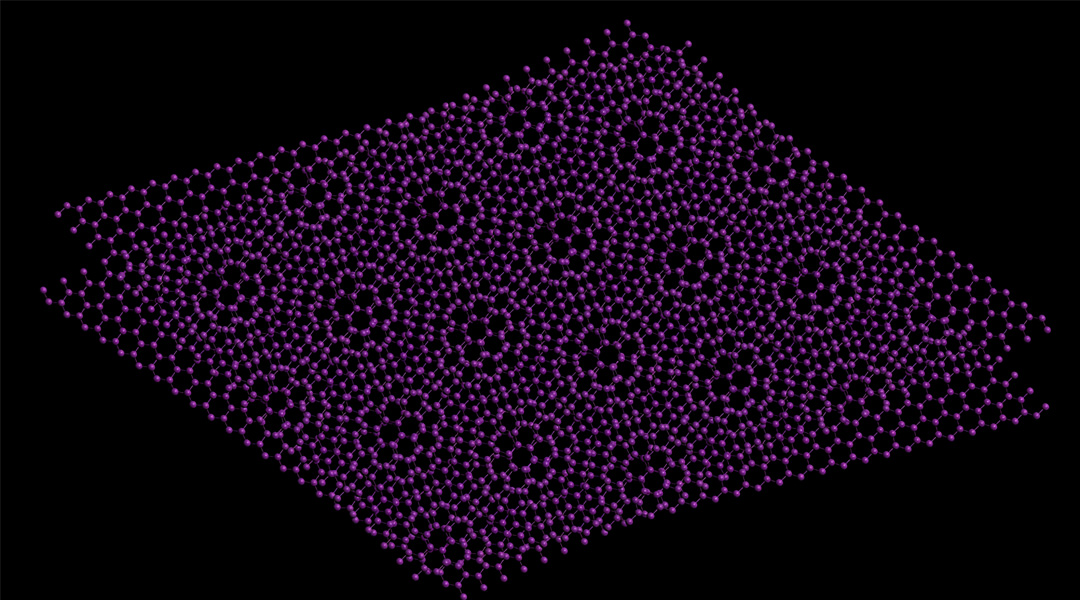A study has found that two atom-thick layers of twisted bismuth might exhibit superconductivity at temperatures significantly higher than the near absolute zero required for a conventional superconductor, like bulk bismuth.
“Much has been written about superconductivity on twisted bilayer graphene for certain ‘magic angles’, so it seemed natural for us to investigate the possible existence of superconductivity in other layered materials,” said Ariel Valladares, a professor at the Universidad Nacional Autónoma de México and lead author of the study, in an email.
“We were trying to see if this behavior could be considered general or that it only occurs for graphene. Also, new ways to generate superconducting materials have to be explored,” he continued.
This would be a remarkable achievement and a significant step, overcoming a major obstacle to practical applications of superconductivity in fields such as computer science, energy, communications, and electronics.
Why is creating a superconductor so hard?
Superconductivity is the complete disappearance of electrical resistance, meaning the flow of an electrical current without any loss of energy. Behind this phenomenon are composite particles comprised of two electrons called Cooper pairs, which emerge when electrons within a material interact with lattice vibrations, overcoming their natural repulsion and forming a coupled state.
This pairing results in the absence of electrical resistance, allowing Cooper pairs to move through the material without losing energy, thereby sustaining an electric current without needing any applied voltage.
The formation of Cooper pairs depends on the physical state of the lattice. External conditions affecting the positions and interactions between atoms and electrons play a crucial role in determining the properties of these lattice vibrations, thereby influencing the formation of Cooper pairs and the manifestation of superconductivity.
Typically, the temperature required for a material to become superconducting is only a few degrees above absolute zero (or -273 degrees Celsius). Thus, superconductivity has only ever been achieved in a laboratory.
Twisted bismuth
Researchers are therefore motivated to search for new materials that achieve superconductivity at temperatures well above absolute zero. One such material turned out to be twisted bilayer bismuth, a discovery recently published in Advanced Physics Research.
“Bismuth is a very interesting material, since its electronic structure is peculiar and there are different viewpoints concerning the adequacy of the [traditional] approach to describe its superconductivity,” said Valladares. “We recently predicted superconductivity in [its] crystalline phase at atmospheric pressure.”
“We think that bismuth tried to have a cubic crystalline structure, but delicate balances turned the structure into a layered one. Also, practically all the phases that are generated under pressure are superconducting, which seems to indicate that superconductivity is intrinsic to bismuth.”
In their study, Valladares and his colleagues used detailed computer simulations to analyze bilayer bismuth, investigating quantum mechanical interactions between electrons and atoms, depending on the relative position of the layers.
“We constructed two layers of bismuth and superimposed them,” explained Valladares. “Then we rotated one with respect to the other in steps of one degree (or less) until 10 degrees were reached. The [properties] of electronic states and of the vibrational states were calculated for each rotation and finally the superconducting transition temperatures were obtained, using an approach developed by our group to investigate the superconductivity of the [crystalline bismuth] structure.
“The main findings [of our study] are that twisted bismuth bilayers are superconducting with a maximum value for the transition temperature occurring for a twist of 0.5 degrees. The superconducting transition temperature increases from 1.3 millikelvins to 1.8 kelvins (which are -273.15 and -271.35 Celsius, respectively).”
Experiments are key
The computer simulations’ prediction of an increased minimum temperature for superconductivity is promising, but as with the researchers’ previous predictions of superconductivity in three-dimensional bismuth, these theoretical results require experimental confirmation.
“Experimentalists are ingenious and will find a way to test our predictions,” said Valladares. If experiments do confirm that the transition from a three-dimensional crystal lattice to bilayer bismuth can increase this temperature by over three orders of magnitude, it could mark a significant step towards a practical superconductor.
However, further research into the structure of bismuth and other materials is necessary, as the predicted transition temperature of 1.8 Kelvin (-271.35 Celsius) is still too low for practical applications outside specialized laboratories.
“We are engaged in creating and studying new structures of materials that may give clues to develop new species with superconducting properties that can be harvested to lead to new industrial applications,” Valladares concluded.
Reference: Ariel A. Valladares, et al., Superconductivity in Twisted Bismuth Bilayers, Advanced Physics Research (2024), DOI: 10.1002/apxr.202400028
Feature image credit: I. Rodríguez, et al.

















